
Who doesn’t love these red and juicy, heart-shaped fruits? Apart from just enjoying them as they are, strawberries are also, more often than not, used to prepare other food and even products. Strawberry cake, strawberry ice cream, strawberry milkshake, and strawberry jam. And not forgetting, strawberry-flavored soaps, shower gels, hand sanitizers, lip gloss, etc. You name it, and there’s probably one out there made of strawberries. In fact, there are actually several known strawberry species cultivated all over the world. And strictly speaking, strawberries are not considered fruits, since their seeds are found on their skin. Have a look at these strawberry facts to find out more.
- Garden strawberries were first bred in the 1750s in Brittany, France.
- The Woodland strawberry was first cultivated during the 17th century.
- There are approximately 103 different species and subspecies of strawberries.
- 8 large strawberries equivalent to one serving of the fruit.
- In 2017, 9.2 million tonnes of strawberries were produced globally.
- The strawberry is not classified as a berry despite its name.
- Each seed found on the strawberry is one of the ovaries of the flower with another seed inside it.
- Artificial strawberry scents and flavorings are also used in non-food products such as lip gloss.
- The strawberry is classified as an aggregate accessory fruit.
- Strawberries are considered to be a great source of Vitamin C and manganese.
- They also belong to the Plantae kingdom and are classified in the Rosales order.
- The binomial name of the strawberry is Fragaria x Ananassa.
- On average, a single strawberry has 200 seeds on its skin.
- Strawberries are ready for harvest when 3 quarters of their skin has turned from green to red.
- Bruising on fresh strawberries can cause them to grow mold and go bad.
- The strawberry also belongs to the rosids, angiosperms, and tracheophytes clade.
- China produces the most strawberries in the world.
- Fresh strawberries are typically juicy with a slight sourness in taste.
- Strawberries naturally produce a scent similar to that of sweet caramel.
- Strawberry fruits are typically measured in diameter and their sizes vary from season to season.
On average, a strawberry flower has around 5-7 petals on it.
The majority of strawberry flowers will have around 6 petals on average while some may also have as much as 8 petals on the plant. Different strawberry varieties are also noted to have different numbers of petals in relative positions of its body where some hybrid species may also have different colored flowers such as pink.
During certain periods in time, strawberry flowers also require careful attention towards it while the buds begin to take on their form. This is to ensure that better harvests can be made for the following harvest season and will protect them from the cold winter weather until spring comes.
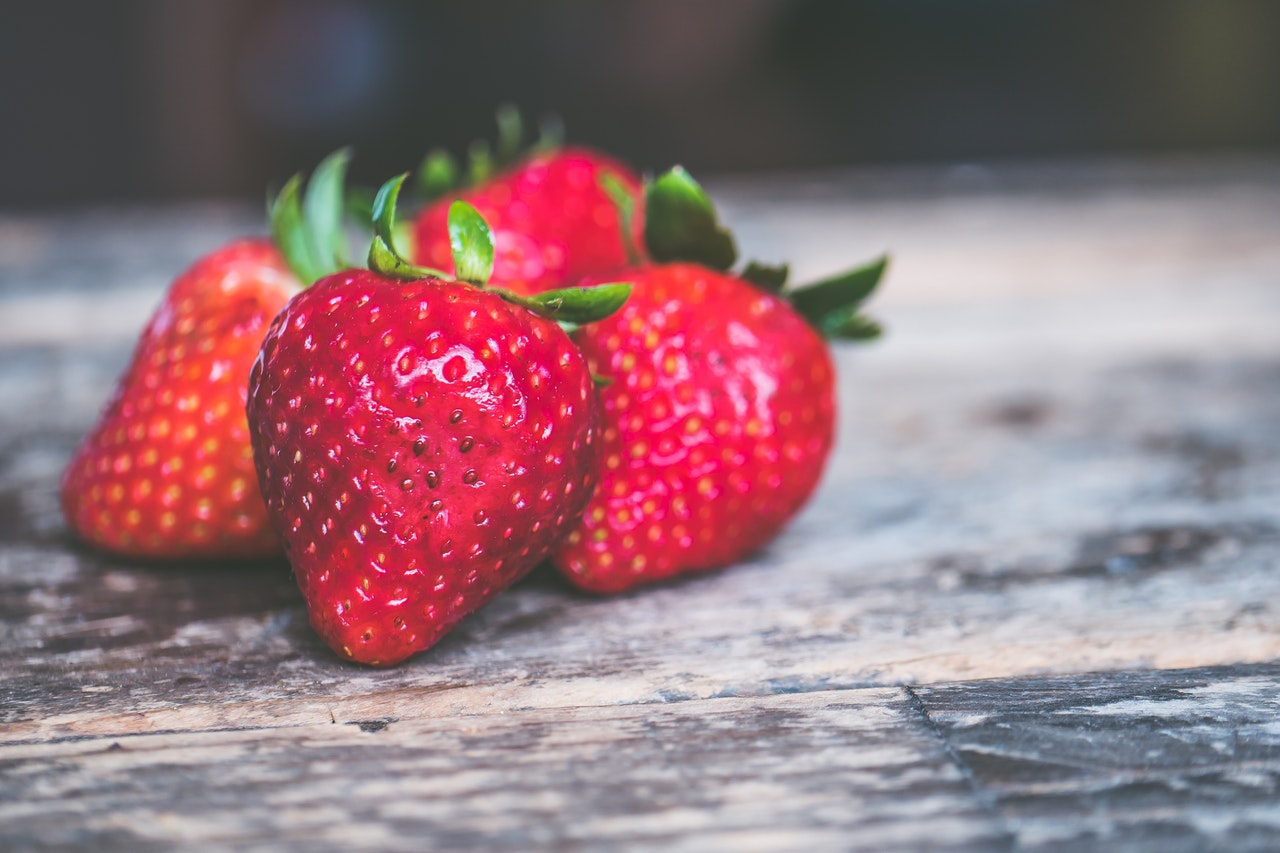
Strawberries are also low in calories and fat content.
According to nutritionists, strawberries provide several nutritional benefits for people who add them to their daily diet. These visually pleasing red fruits are also considered to be a good source of Vitamins and minerals which can also help in preventing several organ complications and other health concerns.
These fruits are also fat-free and as well as cholesterol-free which makes them the perfect guilt-free foods to snack on at any time of the day. Additionally, among the many fruits available to us, strawberries are also among the top 20 fruits with the highest source of antioxidants, manganese, and potassium.
The ancient Romans used to use strawberries to treat fevers and as well as sore throats.
During the time of the ancient Romans, people believed that strawberries carried medicinal properties which led to the common use of the fruit in treating illnesses such as fevers, kidney stones, and as well as sore throats. Additionally, they also believed that strawberries also contained properties in them that could help with treating depression at the time.
At the time, these fruits would often be crushed into a medicinal paste, or directly rubbed against the skin to cure sunburns, blemishes, and other skin issues. Some ancient Romans also used the fruit as a means of curing bad breath and believed that it could whiten their teeth as well.
The strawberry is made up of 91% water.
Strawberries are made up of 91% water which means that eating these luscious red fruits will also contribute to your daily water intake. Additionally, these fruits also provide your body with a good source of fiber and antioxidants which helps the human body fight against and prevent diseases.
However, according to clinical research, you should only consume the recommended serving size per day which is equivalent to around 8 pieces of medium-sized strawberries. Following the recommended intake per day can also help you prevent overdose on particular vitamins which can cause diarrhea and other known complications it can cause with your health.
Eating too many strawberries can cause gas and diarrhea in people.
The majority of fruits are typically known to be high in sugar despite the many nutritional benefits that they can provide to our bodies. The average strawberry contains around 8.12 mg of sugar per cup despite its often sour tastes when eaten fresh which also contributes to the daily sugar when combined with other sugary foods.
Additionally, nutritionists have also stated that eating too many strawberries can also cause complications within people who have existing kidney problems already as the organ cannot remove the excess potassium levels gained from consuming the fruit. In known extreme cases, eating too many strawberries can also cause a person to have difficulties in breathing, heart palpitations, and as well as vomiting episodes.
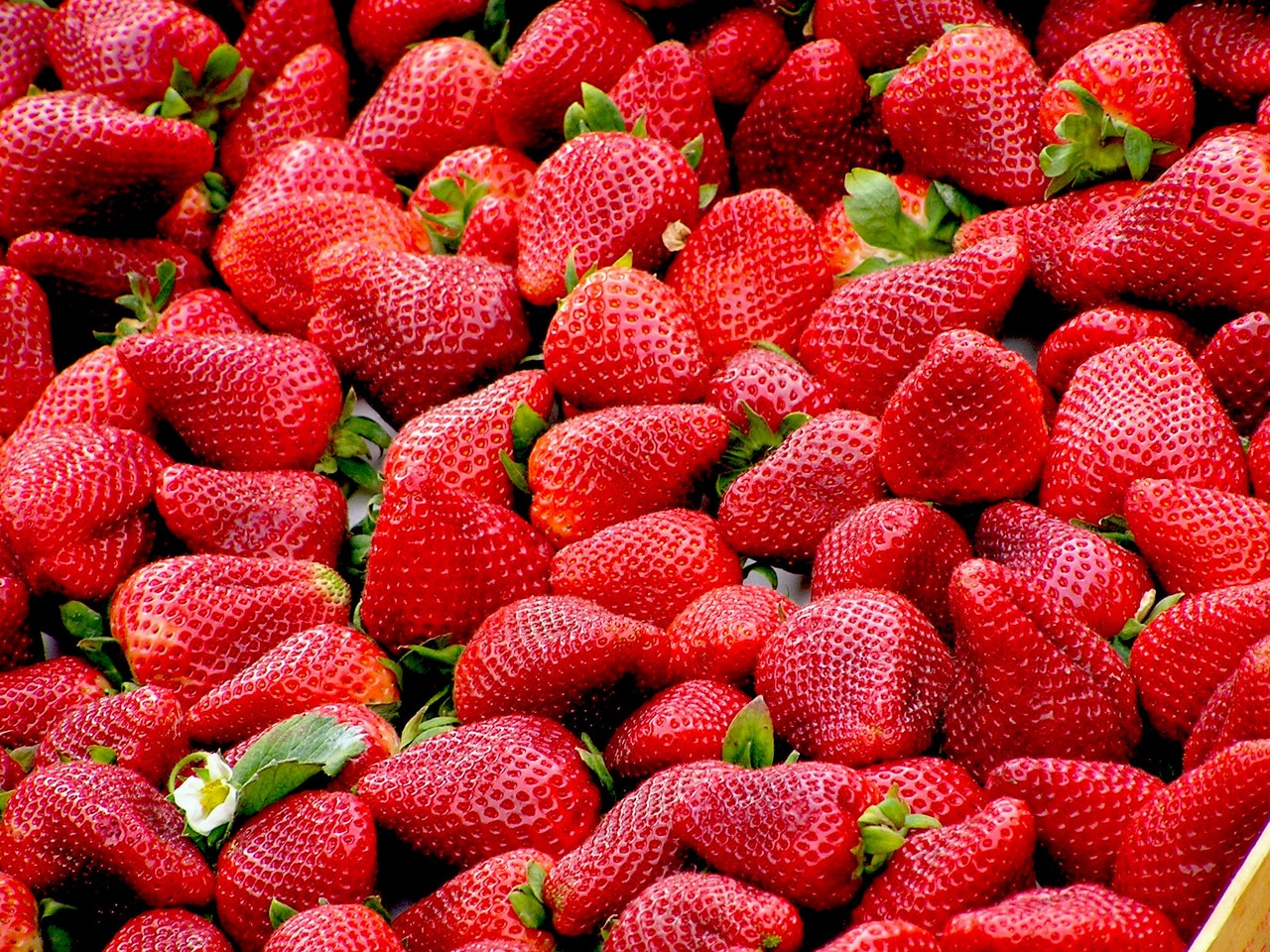
The red color of the strawberry is due to the anthocyanins found in its plant cells.
According to scientists, this molecule is found in several different fruits and flowers which provides them with their vibrant colors. The color that occurs is believed to be dependent on the environment that the plant is in which can turn them into a bright or dark color ranging from red, blue, green, etc.
Strawberries are noted to naturally turn red during their process of ripening before being harvested for consumption. Additionally, scientists have also noted that the anthocyanins found in the fruit may also contain nutritional benefits which give people more reason to not peel several fruits for their added health bonuses.
Artificial strawberry flavoring often does not use actual strawberries in its ingredients.
Strawberry flavorings typically make use of a food additive referred to as castoreum which is derived from particular glands found in beavers when being used as an ingredient. This is considered to be a flavor enhancer rather than a flavoring ingredient like vanilla or raspberry flavoring as those typically make use of the actual fruit extracts of its name.
Additionally, castoreum is a secretion from the glands of either male or female beavers which is also used in making several artificial scents commonly used in perfumes that help make the fragrance lasts much longer on a surface. The secretion and smell that comes from this gland are also often referred to as beaver taint.
There is a world record for the most amount of strawberries eaten within a minute.
The world record belongs to a young girl named Rian Gibson, age 8, who ate a total of 12 strawberries within 60 seconds. Additionally, there are also world records held for several other strawberry related topics.
The world record for the heaviest harvested strawberry weighs a total of 250 grams with a circumference of nearly 30 centimeters and was grown by a Japanese man named Koji Nakao who lives in the Fukuoka prefecture in Japan. This world record was achieved on January 28, 2015, and he still currently holds the world record for this as of 2020.
The strawberry fruit is a member of the rose family.
The strawberry fruit is classified into the Rosaceae family which is also commonly known as the rose family despite being a fruit harvested for consumption. This group is also known to be made up of flowering plants which the strawberry has close relations with due to its budding system while growing.
Strawberries and other members of the rose family are considered to be actinomorphic or symmetrical which makes them nearly always hermaphroditic. Typically, strawberries are largely considered to be native to the temperate regions found in the Northern Hemisphere but are also now commonly grown and harvested all over the world.
Around 94% of households in the United States consume strawberries.
According to the United States Department of Agriculture (USDA), 94% of American households consume strawberries. Additionally, each person in those said households also consumes about an average of 4.85 lbs of fresh strawberries and frozen strawberries each year.
These strawberries are usually consumed as fruit but are also commonly used as an ingredient for various recipes such as milkshakes, ice cream, desserts, salads, and many other foods. Another common way to enjoy the fruit is also by pairing them with sweet dips such as melted chocolate or topped with whipped cream.
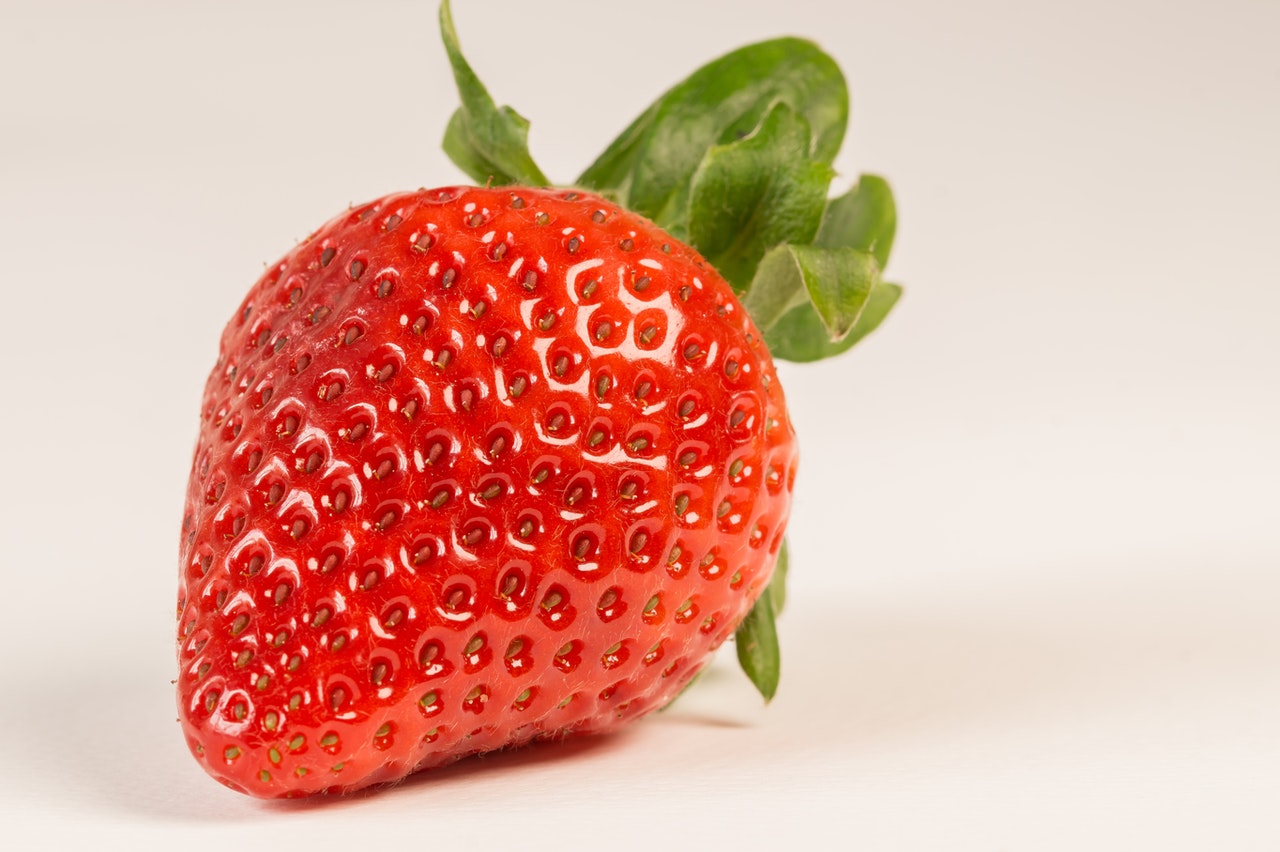
During medieval times, serving strawberries at ceremonies were believed to promote peace.
For centuries, strawberries have been surrounded by several superstitions and beliefs stating their use and benefits over time. During the middle ages, strawberry fruits were commonly served to the people boiled or cooked into certain dishes due to a belief that this fruit could grant peace at celebrations and major events.
In some cases, the upper class would also partake in these celebrations but would consume the fruit in the form of expensive treats such as strawberry pudding, pottages, or other thick soups as they believed that eating the fruit raw could be dangerous. However, fresh wild strawberries were typically consumed by the poor and lower classes despite the brief that they were unclean and filled with several kinds of pests inside them.
Strawberries are also rich in antioxidants and promote benefits for better health.
Apart from antioxidants, strawberries are also noted to have high amounts of plant compounds which can promote great benefits for human heart health. Additionally, consuming the fruit raw is also known to promote great blood sugar control and provide vitamins proven to help improve and brighter one’s skin such as sodium ascorbyl phosphate (SAP).
Additionally, since this fruit contains high amounts of water, it is also considered to be a good addition to a healthy diet as its calorie and carb content is significantly low. Strawberries are considered to be one of the most popular fruits regularly consumed today as they are one of the most widely grown fruit crops in the world.
Strawberries also contain more vitamin C compared to oranges.
Strawberries contain several vitamins in minerals inside it that offer numerous health benefits to us with regular consumption. According to nutritionists, an average-sized strawberry has approximately 58.8 mg of Vitamin C which is 5.6 mg more than that of the average orange fruit.
Vitamin C is also generally known as ascorbic acid which aids humans in the growth and development of the body’s tissues apart from also aiding in strengthening our immune systems. Additionally, consuming the recommended amount of Vitamin C as part of your daily diet can also aid the maintenance of cartilages, bones, and as well as our teeth.
It took a total of 98 research institutes to map the genome of the strawberry.
The cultivated strawberry is said to have originated over 300 years ago from wild progenitors that came from the Americas. Over time, this luscious red fruit has become one of the world’s most cultivated fruit crops due to its many health benefits and as well as its appealing appearance.
According to scientists, the map of the genome of the strawberry was discovered through focusing on research in molecular biology which includes the fruit’s development, fruit quality, and as well as its interactions with plant pathogens. Research has also shown that this red fruit also has around 8 sets of chromosomes which add to their complicated DNA.
Planting a strawberry in the ground can cause it to produce via its seeds.
The strawberry fruit can be planted by planting its seeds into moist soil during the early spring to allow for several weeks of germination. Strawberry seeds that are not recommended to use are from those that come from green and unripe strawberries whose seeds have yet to fully develop as they are more likely to not germinate.
The seeds can be collected by drying up the fruit either traditionally or by using a common dehydrator machine and then later on rubbing the skin of the fruit to release the dried seeds. An established strawberry plant takes around 4 to 6 weeks before it can produce fruit and is typically harvested in the later spring or early summer seasons.

A museum dedicated to strawberries can be found in Belgium.
The Musee de la Fraise de Wepion is a museum located in a small village in Namur, Belgium which is dedicated to the red fruit and its involvement in the town’s local history. The museum can be found in a town called Wepion where strawberry cultivation is considered to be one of the most well-kept traditions of this region in Belgium.
The strawberry museum features five different exhibits that depict the history of strawberries in the town and their importance to its culture. Additionally, there is also a small garden with strawberry plants where some visitors may be lucky enough to take a tour of and sample some of the museum’s grown strawberry fruits.
The American state of California accounts for 75% of strawberry crops in the United States.
In the United States, fresh market strawberries make up around 82% of the country’s total production of strawberry fruit which totals to around 1.3 billion pounds of strawberries. In the state of California, over 60,000 acres are used to grow strawberries which account for 75% of the total strawberry production in the United States.
Apart from strawberries, the state of California also accounts for around half of the United State’s total fruit production as well including apples, oranges, grapes, and many others. On average, a single strawberry plant in the United States produces around 14,000 pounds of strawberries per acre.
Strawberries can also be crushed and turned into paint.
Here’s a fact that most people are not aware of. Strawberries can be used to make paint that will act similarly to watercolor paint. To turn a strawberry fruit into the paint, the fruit must be crushed and strained to allow its juices to be collected in a container.
The plants are then mixed with a small amount of flour which will help the paint thicken later on to create different shades of colors. Once the product is complete, the paint made from strawberries can be used to make different types of artwork once a small amount of water is added to the paint solution.
The word strawberry comes from the old English word ‘streawbelige’.
According to research, there has yet to be a discovered reason as to why this red fruit was given such a name. However, over time a few theories have been made as to the origins of the name of the red fruit.
Some stories suggest that the name strawberry comes from the characteristics of the red fruit where the term ‘straw’ comes from the stem of the fruit which helps it obtain its nutrients during its growth. Additionally, it is also believed that the name does not exist in other European languages where the word is replaced by similar-sounding terms instead.
Allergic reactions to strawberries are also considered to be fairly common among children.
Those who experience allergic reactions to strawberries often experience rashes around their body and or a strange itching feeling inside of their mouth. Other people may also experience more severe reactions such as anaphylaxis which is considered to be a life-threatening allergic reaction where the immune system of the body overreacts to the allergen.
Common allergy symptoms from eating strawberries include itchy skin, wheezing, coughing, nausea, stomach pains, and many others. Typically, mild to moderate allergic reactions to strawberries are simple and quick to treat with the use of antihistamines and other over-the-counter prescriptions while more severe reactions will require a trip to the emergency room and a consultation with a doctor.
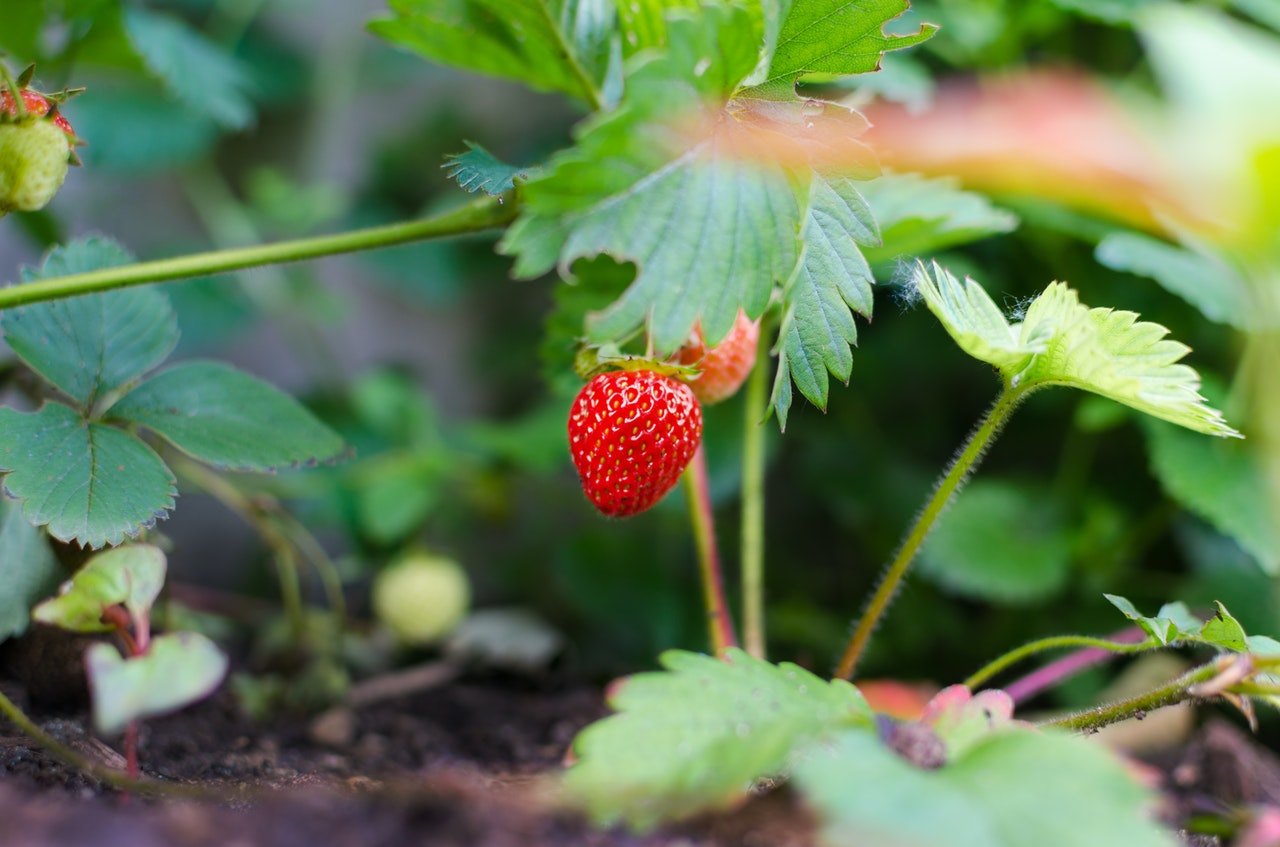
Strawberry plants are also susceptible to several diseases when subjected to stress.
According to research, when a strawberry plant is stressed out, it is more likely to develop organisms that could cause diseases when consumed by organisms. Typically, the stress in strawberry plants is a result of being planted in a clay pot or being planted in soil with high levels of salt.
Additionally, other factors such as improper planting depth, lack of or overdose in water, lack of exposure to direct sunlight, and temperature could also cause the strawberry plant to become stressed in its environment. Strawberry plants that are known to be infected often appear to lack the shiny green luster and will grow in a slumped manner compared to that of what a healthy plant will often exhibit.
Strawberries are also noted to have aphrodisiac properties.
A study has shown that regularly consuming more Vitamin C could help boost oxytocin levels which can, later on, act provide aphrodisiac properties. Because of this study, strawberries are considered to have properties of an aphrodisiac which could help boost arousal and as well as trigger sexual desire in people.
Additionally, in Ancient Rome, the strawberry fruit was once considered as a symbol of Venus, who was known as the Greek goddess of love. During this time, it was also believed that red fruits held mysterious powers within them which led the ancient Greeks in forbidding the eating of strawberries and other similarly colored red foods.
The flavor of the strawberry varies depending on the weather conditions.
Strawberries are known to have a balance of sweet-tasting and acidic flavors which vary depending on how ripe the fruit has become. According to research, as strawberry fruit ripens, the sugar content of the fruit slowly rises from approximately 5% in unripe green strawberries.
As the strawberry continues to ripen over time, the acidic taste of the fruit also decreases, causing a sweeter flavor when consumed. Perfectly ripe strawberries are considered to be bright and firm in texture, along with a small sweet odor. Whereas wrinkled and discolored strawberries may be closer to becoming spoiled and no longer safe to consume.
Strawberries are one of the first fruits to ripen during the spring.
Due to the short amount of time it takes to grow strawberry plants, the strawberry fruit is typically the first fruit to ripen during the arrival of the spring seasons. Additionally, these fruits are also considered to be the only known fruit whose seeds are located on the outside of its skin.
Once these fruits have been grown, strawberries do not ripen once they are picked which also causes them to spoil faster than any other fruit. Safely keeping strawberries in the fridge can help slow down this process and preserve the fruit for a few days.
An acre of land can produce around 50 thousand pounds of strawberries.
In the United States, the strawberry fruit is grown in every single state in the country and as well as in Canadian provinces. Out of the 50 total states in the United States of America, California is considered to be the largest contributor to the country’s total strawberry production, which is followed by the state of Florida.
Additionally, there are over 100 different variants of strawberries that are grown and sold in the United States which further proves the popularity of the fruit. Each year, approximately 94% of households in the United States claim to regularly consume strawberries and as well as other products made with the fruit.
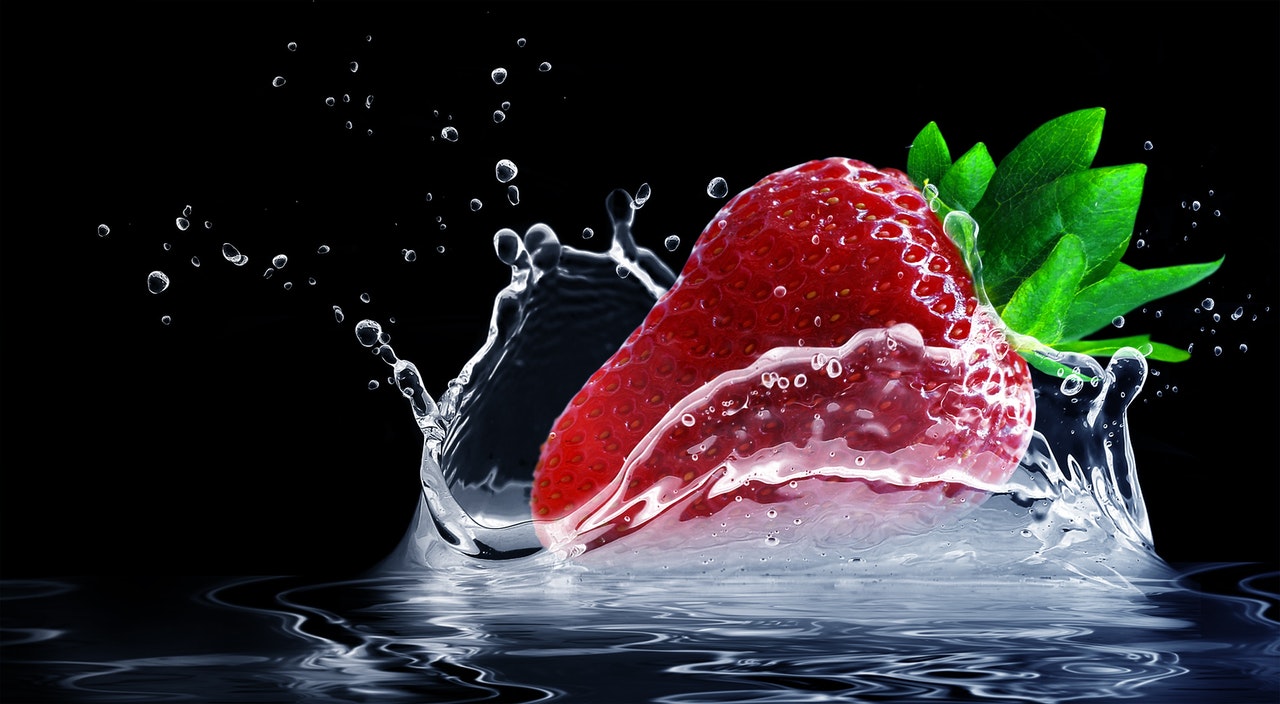
The perfect temperature for strawberry plants is considered to be around 55 to 78 degrees.
According to research, strawberry plants should not be under temperatures of over 78 degrees and colder than 55 degrees to maintain the plant in good condition. Strawberry plants found in large production farms typically have a controlled temperature that allows the fruit to stay in the ideal temperature condition which keeps them fresh until delivery.
Each plant is also typically hand-picked around every 3 days or so, which is the required time that the fruit needs to complete its cycle from turning green to red. Strawberry plants that are also exposed to great amounts of sunlight typically grow better compared to those that are kept in the shade for certain amounts of time.
Planting strawberries have been noted to have benefits to the domestic environment.
According to research, planting strawberries is considered to be fairly sustainable and has shown no significant damage to the environment. Additionally, it has also been noted that strawberry farms that do not make use of pesticides also significantly reduce the harmful effects of the chemicals on both their produce and soil.
On the other hand, when growing strawberries, it is also important to take note of the type of soil that is used when planted as it can help determine how the plant will grow. Typically, deep soil is considered to be the best for strawberry planting, most especially when it contains at least 2% of organic matter.
Strawberries are typically consumed raw or when freshly picked.
While there are several methods of cooking and preparing strawberries, this red fruit is more commonly consumed raw or when freshly picked from its plant. Naturally grown strawberries are considered to be fairly safe to consume as it is so long as the fruit is properly washed first before consumption.
Additionally, consuming this red fruit raw is also believed to provide more vitamins, minerals, and other health benefits compared to consuming it when prepared.
As of 2017, the United States is considered to be the leading producer of strawberries.
In just a year, the United States produced a total of 1.43 million tons of strawberries which helped rank the country as the top producer in the global strawberry market. According to statistics, the United States accounts for nearly ⅓ of the world’s total strawberry production due to its favorable climate conditions, most especially in the state of California.
Currently, some of the most popular varieties of strawberries found in the United States include Allstar, Earliglow, Tristar, and Chandler strawberries.
Strawberries also come in other colors such as yellow, white, black, and purple.
Apart from the many variants of red strawberries, several varieties come in different and unique colors. Some of these strawberries may be genetically modified to attain a different color other than their natural red, while other colored strawberries may also occur naturally due to a unique genetic mutation.
Was this page helpful?
Our commitment to delivering trustworthy and engaging content is at the heart of what we do. Each fact on our site is contributed by real users like you, bringing a wealth of diverse insights and information. To ensure the highest standards of accuracy and reliability, our dedicated editors meticulously review each submission. This process guarantees that the facts we share are not only fascinating but also credible. Trust in our commitment to quality and authenticity as you explore and learn with us.
